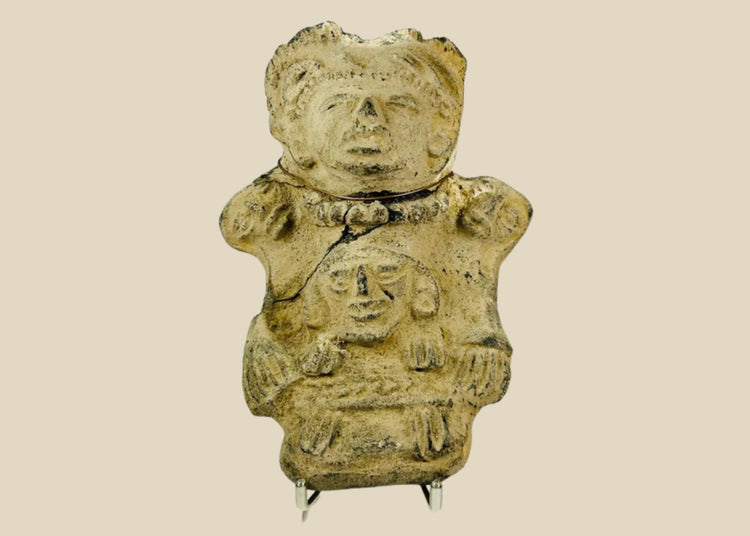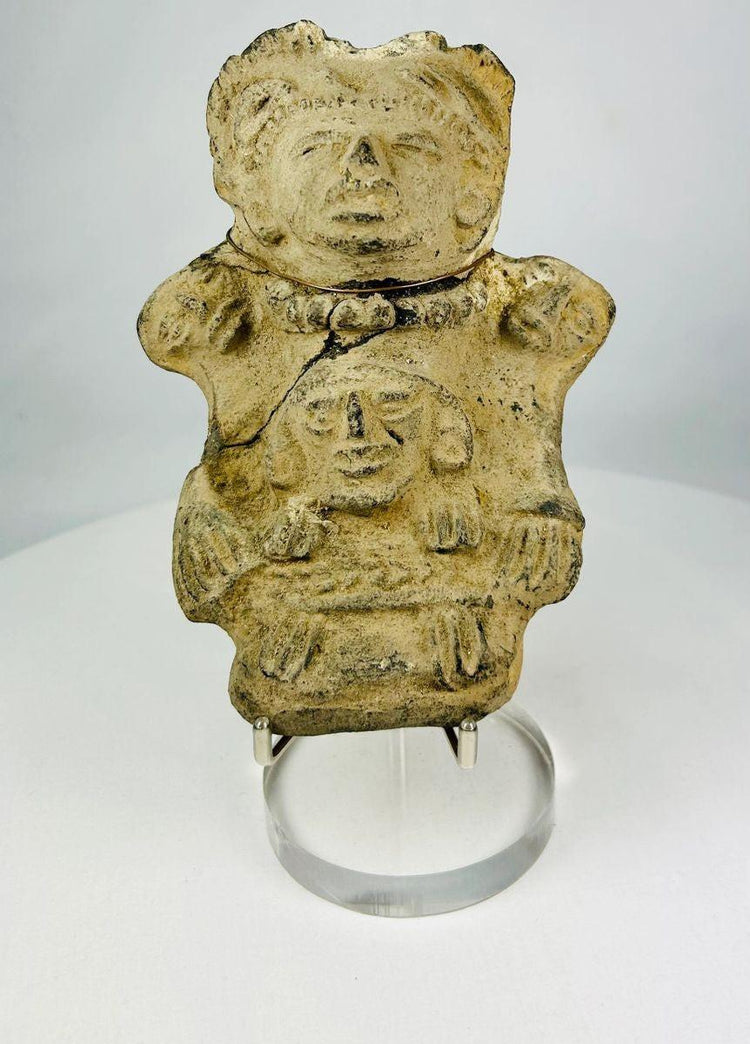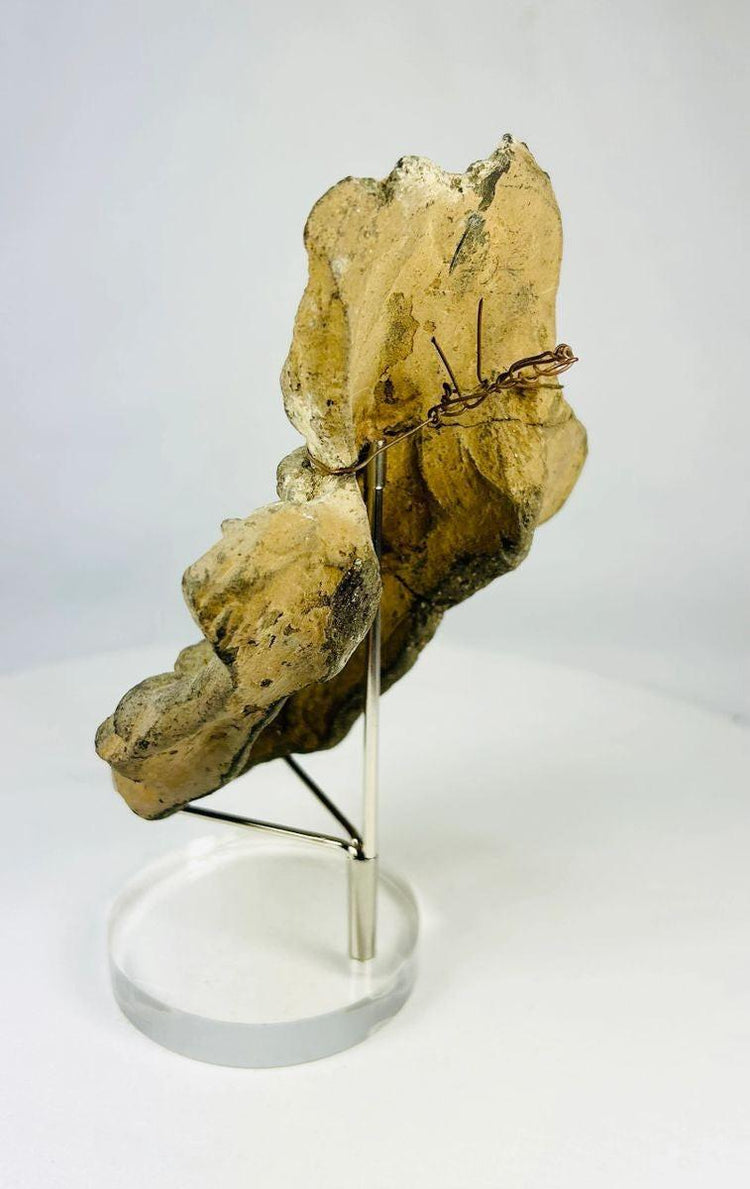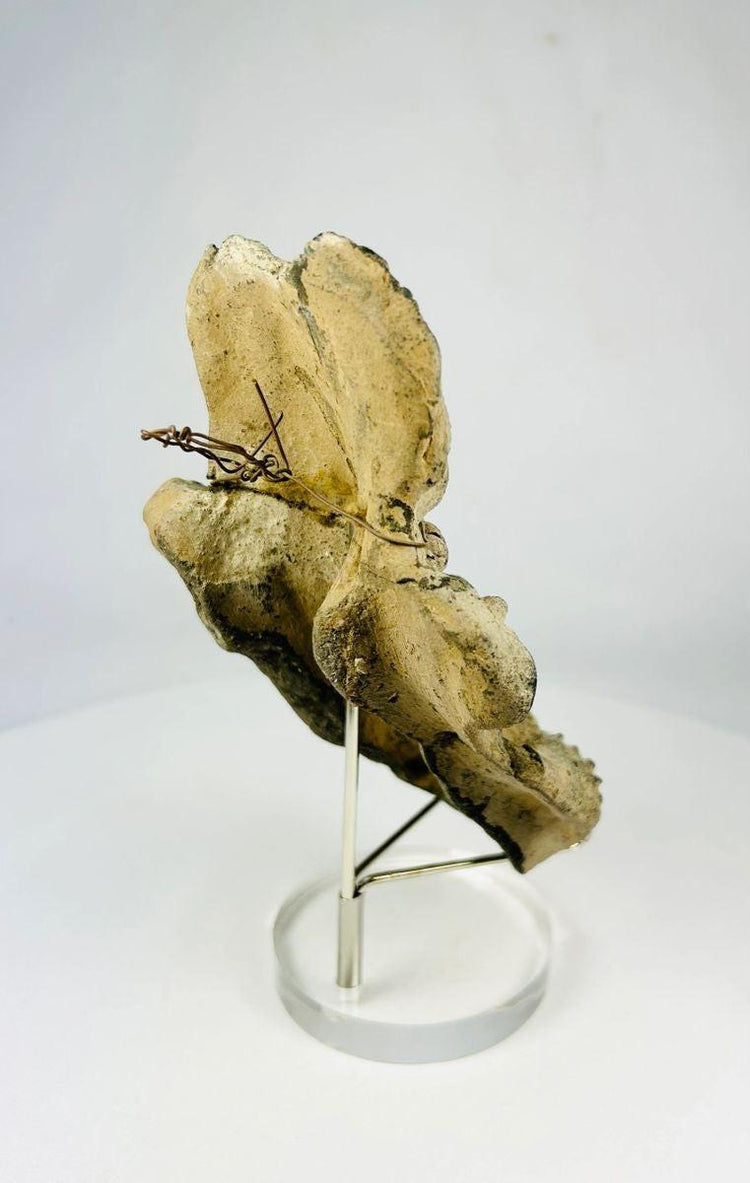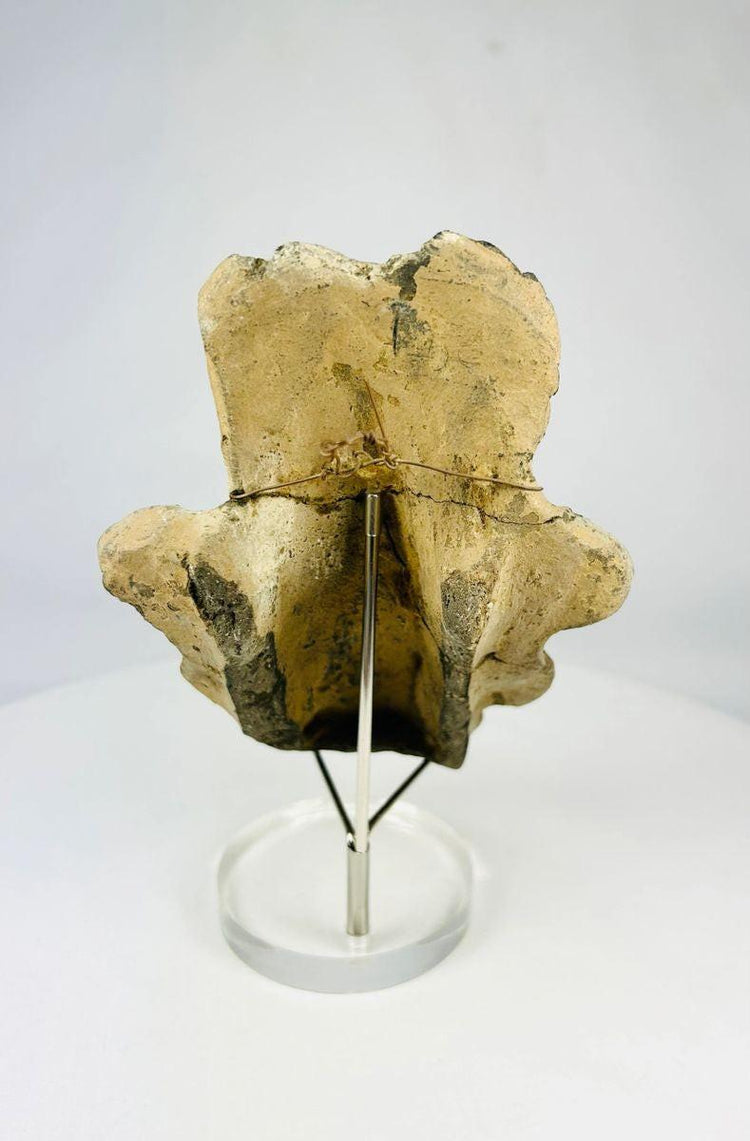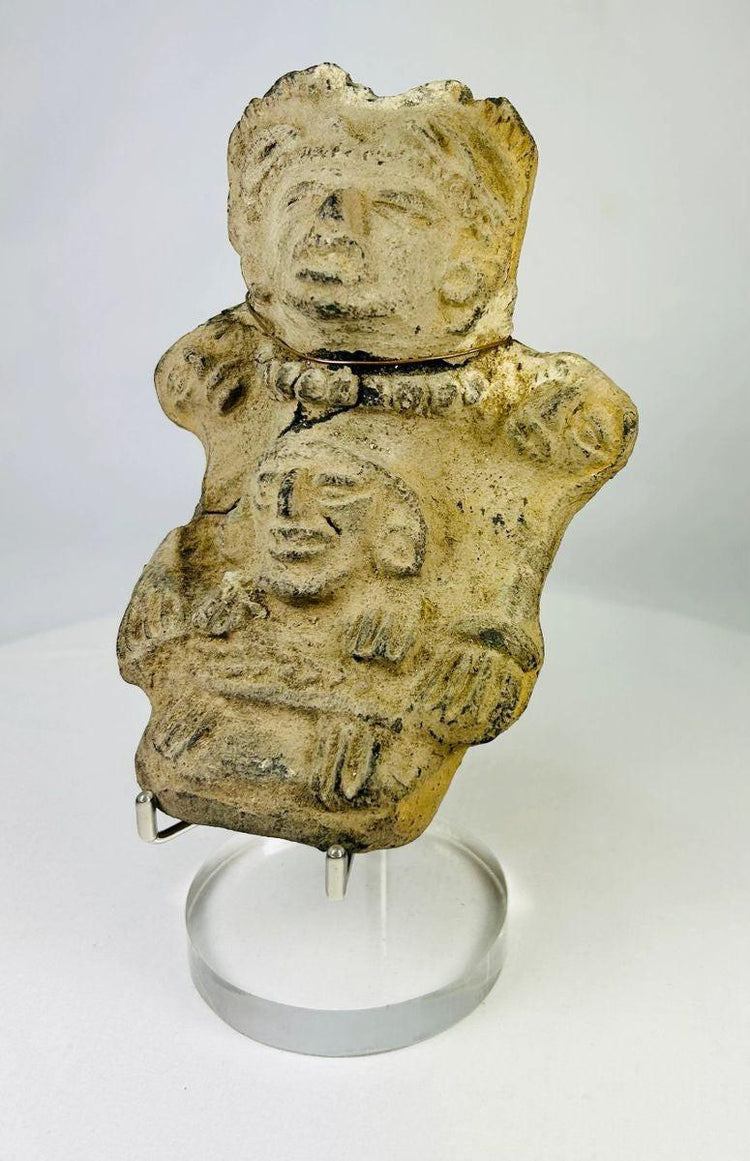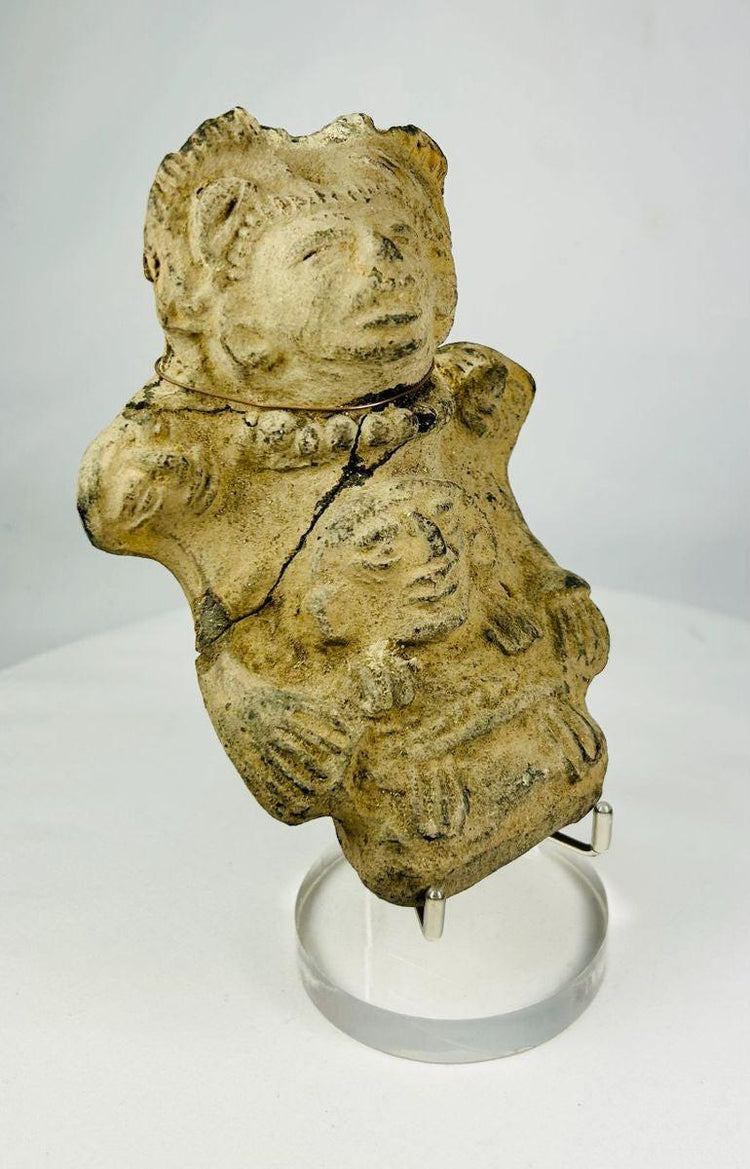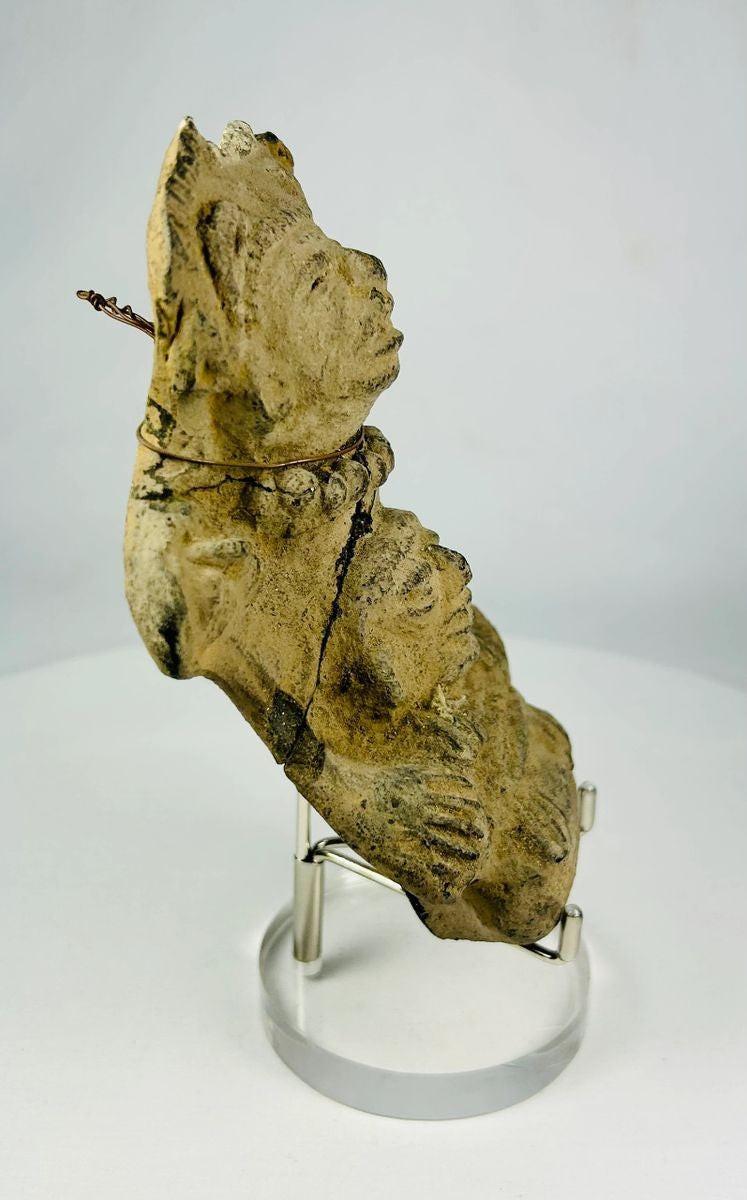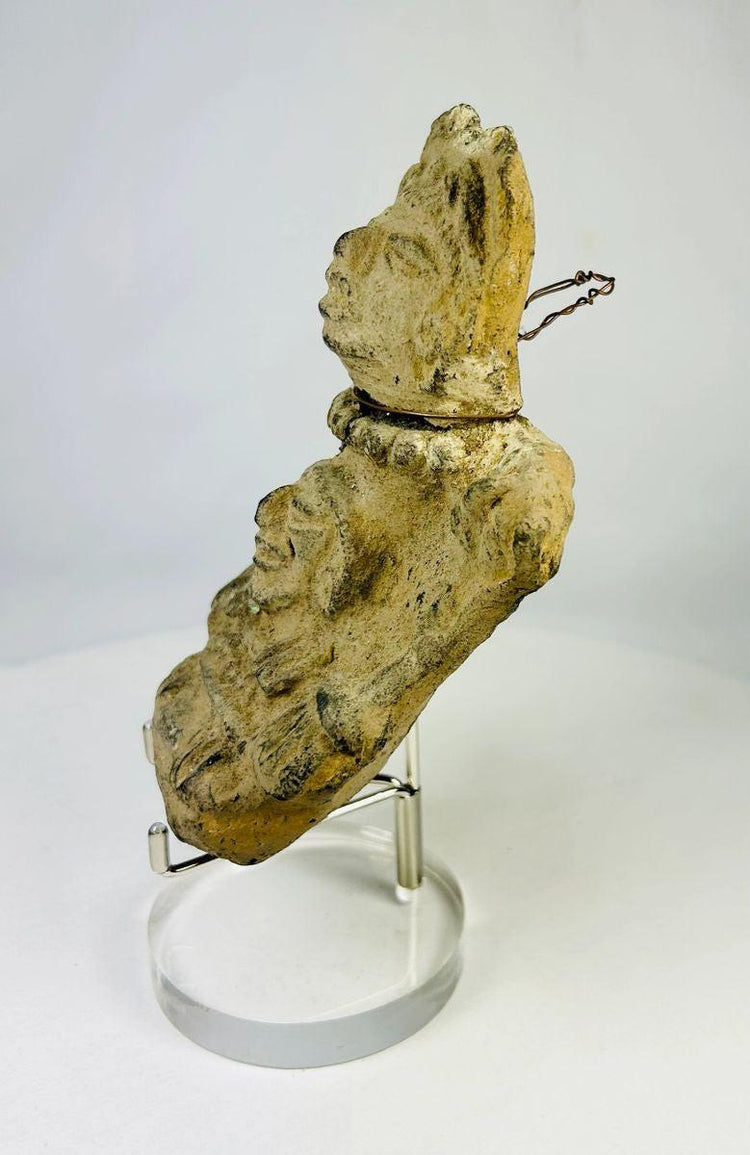Pre-Columbian | Veracruz Dual-Figure | Ceramic Effigy | Circa 300 BCE–600 CE
Description
More
Less
Historical Context & Origin
Region: Veracruz, Mesoamerica
Material: Earthenware clay
Period: Late Pre-Classic to Early Classic Period, circa 300 BCE–600 CE
Description
This exceptional Pre-Columbian effigy from the Veracruz culture presents a dual-figure composition, crafted with expressive artistry and symbolic depth. The piece features two stacked figures, a distinctive arrangement that conveys hierarchical or spiritual relationships. The upper figure is adorned with an elaborate headdress and beaded necklace, likely representing a deity or ceremonial figure of high status. The lower figure, seated symmetrically, may symbolize a subordinate or spiritual offering, reinforcing themes of ritual hierarchy.
Both figures are rendered with finely incised facial details, attire, and ornaments, demonstrating the technical mastery of Veracruz potters. Despite its age, the effigy retains remarkable definition in its features, with visible traces of ritual use and earthen deposits enhancing its authenticity.
Features
- Dual-figure composition with stacked symbolic narrative
- Upper figure with elaborate headdress and beaded necklace
- Lower seated figure representing ceremonial or spiritual themes
- Detailed facial features and attire, reflective of Veracruz artistic sophistication
- Stable with professionally preserved surface cracks
Cultural Significance
Veracruz ceramics are celebrated for their blend of realism and symbolism, often tied to religious and funerary rites. Effigies such as this would have played an important role in ceremonial contexts, either as offerings or as ritual representations of divine and human interplay. The stacked form may symbolize layered cosmologies—linking earthly and spiritual realms—or reflect hierarchical structures within Veracruz society.
Condition
Good archaeological condition. The effigy displays age-related surface wear, including stabilized cracks, while maintaining structural stability. Mineral deposits and burial patina remain present, affirming its antiquity.
Dimensions (approximate)
Height: 6 in
Age
Approximately 1,400–2,300 years old
Description
Historical Context & Origin
Region: Veracruz, Mesoamerica
Material: Earthenware clay
Period: Late Pre-Classic to Early Classic Period, circa 300 BCE–600 CE
Description
This exceptional Pre-Columbian effigy from the Veracruz culture presents a dual-figure composition, crafted with expressive artistry and symbolic depth. The piece features two stacked figures, a distinctive arrangement that conveys hierarchical or spiritual relationships. The upper figure is adorned with an elaborate headdress and beaded necklace, likely representing a deity or ceremonial figure of high status. The lower figure, seated symmetrically, may symbolize a subordinate or spiritual offering, reinforcing themes of ritual hierarchy.
Both figures are rendered with finely incised facial details, attire, and ornaments, demonstrating the technical mastery of Veracruz potters. Despite its age, the effigy retains remarkable definition in its features, with visible traces of ritual use and earthen deposits enhancing its authenticity.
Features
- Dual-figure composition with stacked symbolic narrative
- Upper figure with elaborate headdress and beaded necklace
- Lower seated figure representing ceremonial or spiritual themes
- Detailed facial features and attire, reflective of Veracruz artistic sophistication
- Stable with professionally preserved surface cracks
Cultural Significance
Veracruz ceramics are celebrated for their blend of realism and symbolism, often tied to religious and funerary rites. Effigies such as this would have played an important role in ceremonial contexts, either as offerings or as ritual representations of divine and human interplay. The stacked form may symbolize layered cosmologies—linking earthly and spiritual realms—or reflect hierarchical structures within Veracruz society.
Condition
Good archaeological condition. The effigy displays age-related surface wear, including stabilized cracks, while maintaining structural stability. Mineral deposits and burial patina remain present, affirming its antiquity.
Dimensions (approximate)
Height: 6 in
Age
Approximately 1,400–2,300 years old
You May Also Like
























